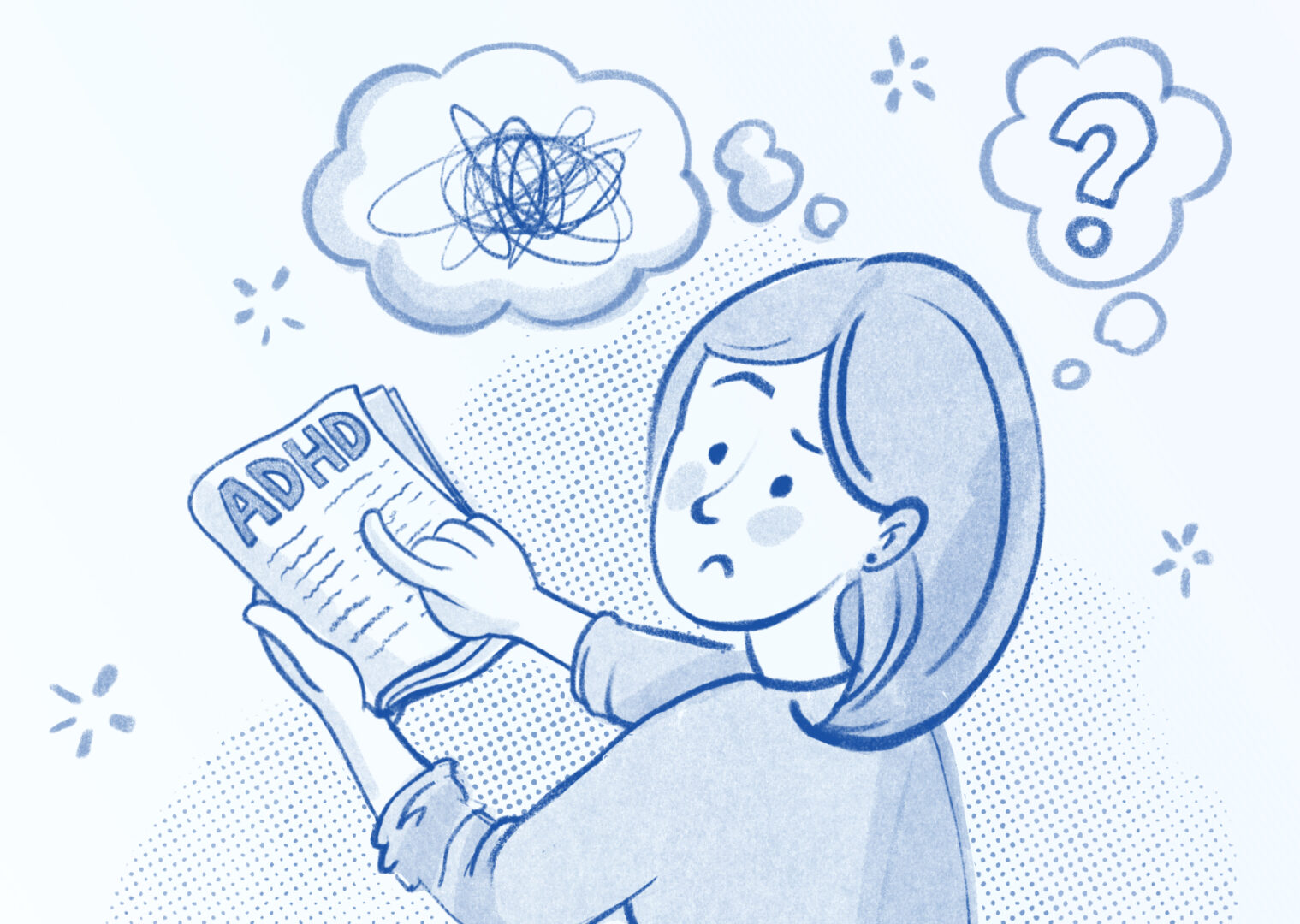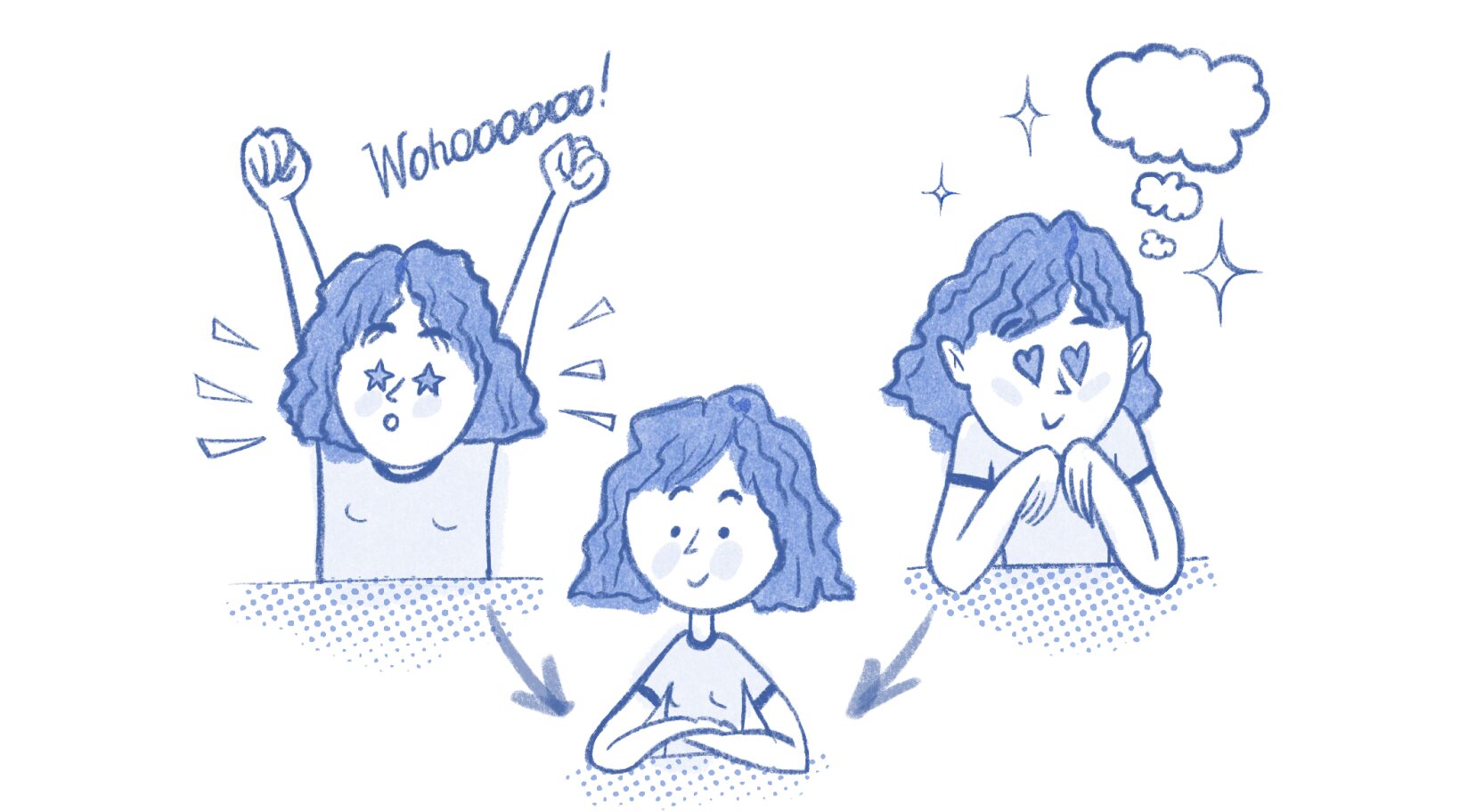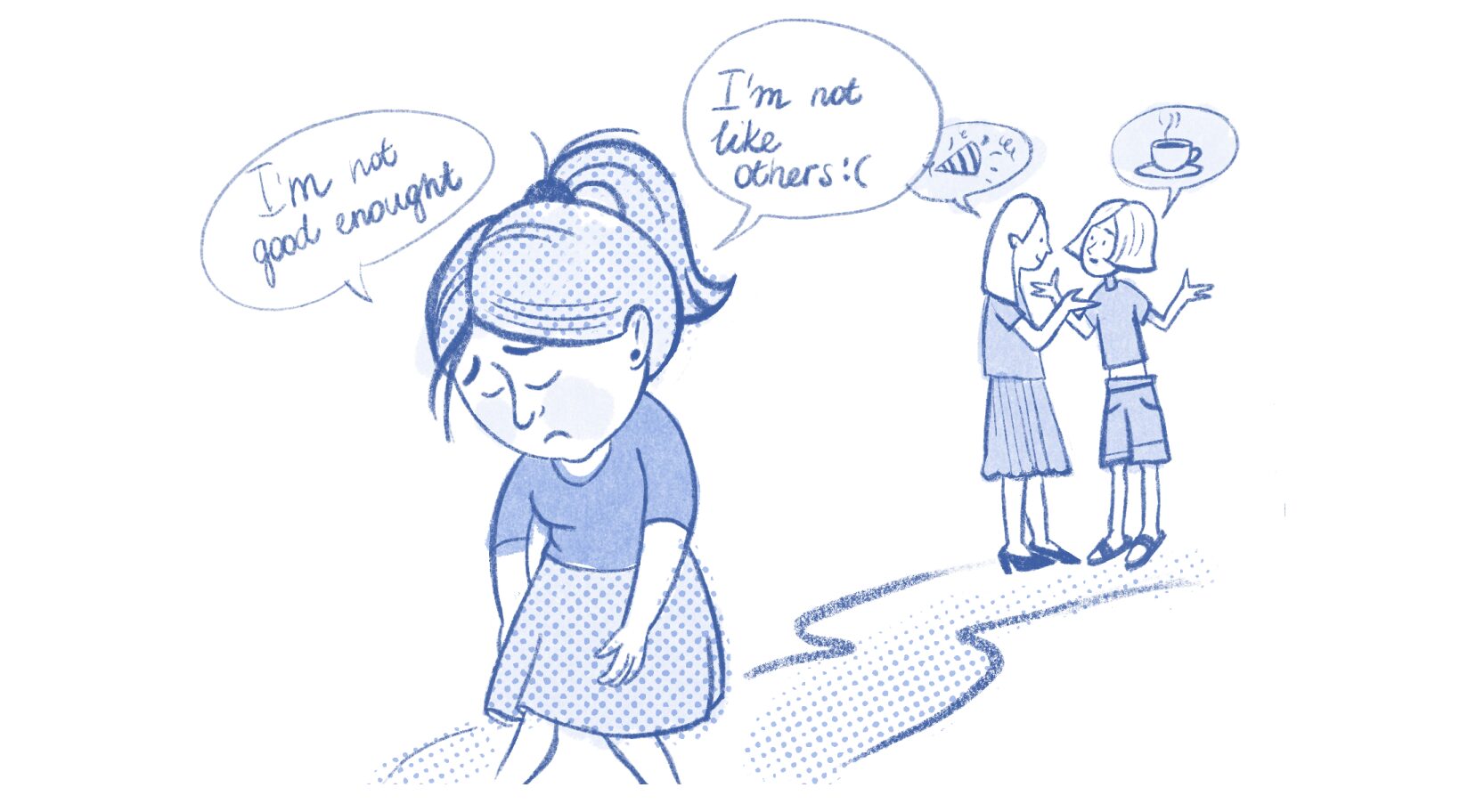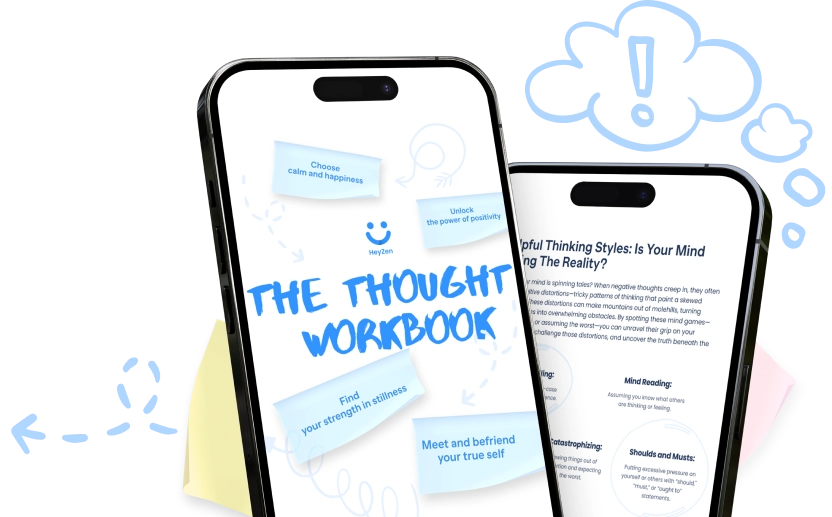ADHD in Women: How to Manage ADHD Symptoms Amidst the Chaos of Life

Woman’s life is full of overcomings and going-throughs. They, though, must be hidden from friends and family because “Heaven forbid I bother anyone with my problems!”
ADHD in girls is diagnosed at half a rate compared to that of boys. Why? Because it’s easier to spot a hyperactive boy disrupting studies than a quiet, shy, and inattentive girl in the back seat. Left undiagnosed, girls grow up with attention deficit hyperactivity disorder (ADHD) and develop depression and anxiety later in life, thinking of themselves as stupid and unworthy.
If it sounds familiar to you, let us assure you: this can be changed. So, let’s start from the very beginning and answer the common question “What is ADHD and what causes it?”
Key takeaways
- ADHD in women is often underdiagnosed, as symptoms can be more subtle compared to men.
- Women with ADHD may develop harmful coping strategies, such as overworking or suppressing their thoughts to avoid appearing impulsive. Untreated ADHD can lead to severe mental health issues, including depression, anxiety, and risky behaviors.
- ADHD symptoms in women can overlap with other mental health conditions like depression, anxiety, and eating disorders.
- ADHD can manifest in three main types: inattentive, impulsive-hyperactive, and combined. Women often experience inattentive symptoms, leading to difficulties with time management and concentration.
- Treatment options for ADHD include both medication (stimulants and non-stimulants) and natural methods, such as exercise, meditation, somatic experiencing, and cognitive-behavioral therapy (CBT). Support from a community and engaging in practices like yoga and meditation can provide relief and help manage symptoms effectively.
- Proper diagnosis and a personalized treatment plan can significantly improve the quality of life for women with ADHD.
Attention deficit hyperactivity disorder: what exactly is wrong with us?
ADHD is a developmental, or, more precisely, a neurodevelopmental disorder, the first symptoms of which can be noticed in early childhood. People are born with it, and its symptoms not only persist in adulthood but get progressively worse and overgrown with other mental health conditions. The struggles of kids with ADHD often go unnoticed, hence the concerning number of undiagnosed adults.
All the causes of ADHD are still being researched. What’s known for now is that ADHD causes a congenital disbalance of neurotransmitters (dopamine, adrenaline, etc.) in the brain. They’re so-called messengers that carry signals from one neuron to another.
When we are to perform a certain task, the neurotransmitters should tell a team of neurons responsible for concentration and attention, “Hey, work!” and send a message to the opposite group that functions when we’re idling: “And you can turn off for now.” These groups alternate with each other; when one works, another one doesn’t. But this is how it flows in a normal brain.
An ADHD brain doesn’t allow neurotransmitters to deliver these signals, so they don’t know when it’s time to function! Instead, they’re working simultaneously, and this is where inattentiveness and lack of concentration stem from.
Also, ADHD primarily affects a person’s executive functions, such as inhibiting our impulses to behave appropriately and effortfully focusing in order to achieve a specific goal. As ADHD brains naturally struggle with these abilities, they should be mindfully developed and maintained to eliminate unpleasant ADHD consequences.
ADHD diagnosis in adult women: why is it difficult?
Did you know that systematic research on women ADHD only started in 1979, and only in 1997 was the first analysis on gender differences published? The lack of extensive data on how female ADHD is represented led to the current number of women struggling with the “hidden” diagnosis.
The problem is that childhood and teenage ADHD makes women work out a set of life management skills that allow them to cope with daily life pretty effectively, which makes their main battle internal and their symptoms manifest in a more covert way.
For example, women tend to develop the following coping strategies, which are harmful to mental health:
- Keeping several copies of something to avoid coming across as forgetful.
- Arriving extremely early rather than late.
- Working overtime and long hours in order to complete tasks on time and avoid looking lazy.
- Keeping silent and avoiding sharing ideas so as not to come across as intrusive or impulsive.
- Surrounding yourself with different types of alerts in order to not miss a deadline or a task.
The Diagnostic and Statistical Manual of Mental Disorders (DSM-5) is a special book created by the American Psychiatric Association, where they outline the main criteria, or ADHD symptoms. This manual became the foundation of the most questionnaires compiled for ADHD diagnosis. The symptoms are subdivided into three types of ADHD, which are characterized by the following traits:
3 types of ADHD

Inattentive
You have primarily inattentive ADHD if you:
- Are easily distracted and sidetracked, even if there are no obvious external distractions.
- Produce inaccurate work and make careless mistakes.
- Even while understanding instructions, fail to follow them.
- Find it difficult to organize tasks, spaces, your day, or perform sequential activities.
- Can be carried away with your own thoughts and stop paying attention to a conversation, lecture, etc.
- Have time-blindness and struggle to meet deadlines.
Impulsive-hyperactive
You have primarily impulsive-hyperactive ADHD if you:
- Struggle to remain still in situations when it is required or expected to do so.
- Always feel restless and fidget with your legs, hair, or any other object within your reach.
- Often interrupt others, finish sentences instead of them, and talk excessively.
- Take over other people’s activities and conversations without asking for permission.
Combined
If you find both impulsivity and inattention symptoms, it’s very likely that you might have the combined type of ADHD. This type has a higher chance of co-occurring with other conditions and is manifested more severely.
However, don’t be misled by the basic description of symptoms outlined by the DSM-5. When it comes to women, they don’t fit these criteria and, as a result, are misdiagnosed with depression or bipolar disorder. Lack of proper diagnosis, in turn, leads to wrong and inefficient treatment that deteriorates health.
Is ADHD in men and women so different?

While boys tend to behave “loudly,” fall into talking excessively, and present other hyperactive symptoms, girls are more likely to develop inattentive ADHD, with bad time management and difficulty concentrating.
Together with inattentiveness, many women and girls tend to internalize their problems and not share their struggles with anyone. That’s why they’re diagnosed with depression instead of ADHD, which is also a real condition but not the root one.

According to the research, women and girls with ADHD are more prone to risky behavior, for example, unprotected sex. 43% of women with ADHD experienced an unplanned pregnancy, versus only 11% of those without the disorder. Moreover, many women with ADHD have high chances of:
- Self-harm (intentional cutting and bruising, as well as eating disorders).
- Struggles with close interpersonal relationships.
- Becoming victims of violence from their partners.
Mental health conditions co-occurring with ADHD

ADHD symptoms often resemble other psychiatric problems. Also, they can co-exist with them. The problem can be in the social factors that influence the development of psychiatric conditions as well as the special functioning of the brain. Regardless of the cause, here are the most widespread subordinate ADHD diagnoses:
Depression
Girls with ADHD are 5.4 times more likely to be diagnosed with major depression and 3 times more likely to be treated for depression before being officially diagnosed with ADHD. 14% of girls are prescribed antidepressants before receiving ADHD treatment, compared to 5% of boys.
There are 3 major types of depression:
Major depression lasts for at least 2 weeks and is characterized by a bad mood, a loss of interest in the things that used to be engaging before, and an inability to perform basic daily tasks, like brushing teeth.
Bipolar disorder is characterized by alternating depressive and manic episodes when a person is switching from depression to an abnormally high mood and energy level. Each episode lasts for at least 7 days.
Dysthymia, or persistent depressive disorder, resembles major depression, but such a state lasts for at least 2 years. Dysthymia is felt less acutely than major depression, and people experience non-ending fatigue, low self-esteem, and hopelessness. Together with it, women can suffer from sporadic major depression episodes.
The study suggests that depression, bipolar disorder, and anxiety are more likely to occur in women with ADHD than in men. Men, at the same time, primarily develop schizophrenia and substance abuse disorders.
Some women do their best to “snap out of” depression, which exacerbates their condition by failing to do so. All depressive disorders are effectively managed by modern treatment options that aim at balancing out the chemical levels in your brain. So, don’t hesitate to reach out for help! In the meantime, you can try doing sports and yoga to naturally boost your dopamine levels, as physical activities are scientifically proven to be non-invasive complements to chemical drugs.
Eating disorders
It’s known that due to poor impulse control and self-regulation, common ADHD symptoms in women, they struggle with understanding the feeling of “fullness” while eating. Moreover, the consumption of carbohydrates can cause a short spike in dopamine and serotonin, and, because of their deficiency, women are craving them.
Women with ADHD are very likely to develop one of the following eating disorders:
Bulimia is characterized by excessive eating of large amounts of food and subsequently getting rid of it via vomiting. This is followed by a period of fasting due to a distorted self-image and feeling guilty about the volume of food consumed.
Binge eating also boils down to eating abnormally large amounts of food, but it’s not followed by intentional vomiting or fasting.
Anorexia, the fear of gaining weight and the subsequent deprivation of oneself from food, is moderately widespread among teenage girls.
Anxiety
Anxiety can manifest in different forms, such as panic attacks, general anxiety, phobias, and social anxiety. The coping strategies developed by women lead to permanent anxiety, constant feeling “on edge,” sleep problems, excessive self-consciousness, and difficulty focusing.
Both men and women with undiagnosed ADHD, but especially women, are in danger of confining themselves into the prison of chronic stress, as they’re unaware that there’s nothing wrong with them and their symptoms can be alleviated via natural and chemical medications.
Treating ADHD: natural and artificial means
ADHD treatment options include both natural and artificial medications. As for the last, patients are typically prescribed stimulant medications that aim at increasing the level of neurotransmitters. You probably know them under the names Adderall, Ritalin, etc. Together with it, doctors can prescribe non-stimulants that also normalize the levels of neurotransmitters and often work as antidepressants and anti-anxiety drugs.
Remember that each type of medication influences different neurotransmitters and parts of the brain. It’s dangerous to take unprescribed pills, as they can significantly deteriorate your state. What doesn’t have any side effects are natural ADHD drugs.
We’ve already mentioned that sports are proven to be a natural dopamine booster. Integrating them into your routine and physical activities will normalize the levels of neurotransmitters, just like ADHD drugs. Surprisingly, there are a bunch more other means worth trying on the way to great well-being.
Meditation
Meditation wasn’t taken seriously until recently. However, it started to be widely used after the first studies of its positive effect on alleviating symptoms of ADHD. There are two big groups of meditations studied within the research: focused and open monitoring meditations. After routinely practicing both for at least two weeks, ADHD adults reported a reduction of up to 81.8% in the hyperactivity and inattentive symptoms.
Paying attention to the feelings and thoughts present in your body is a skill! And meditations teach it to curb impulsive behavior and the negative flow of thoughts. This way, you’re effortfully slowing down the pace of thoughts and making your brain learn how to do so outside of meditation as well.
Somatic experiencing
Developed by Dr. Peter A. Levine, somatic experiencing combines meditations with body movements, breathing exercises, and massaging that allow us to release the negative consequences of ADHD (troubles with sleeping, panic attacks, shame and guilt, anxiety, mood swings, etc.). Somatic experiences boil down to bringing awareness to the bodily sensations caused by bothersome thoughts and emotions.
According to A. Levine, we need to understand and feel how, for example, panic is manifested in our bodies to diminish its effect on our daily lives. It can be a racing heart or tension of muscles: once you gain control over the bodily sensation caused by panic, it’ll stop bothering you as an emotion.
Interestingly, that somatic experiencing already showed its positive effect on people with post-traumatic stress disorder (PTSD), and ADHD traits that affect daily functioning are very similar to those of PTSD.
Psychotherapy
A branch of psychology called cognitive-behavioral therapy (CBT) is also great for teaching women healthy coping strategies for dealing with ADHD symptoms. It’s especially useful for young women and girls, as the skills acquired can help them avoid hurtful and damaging situations.
For instance, CBT can teach physical, breathing, and cognitive techniques on how not to overeat by understanding the signals your body gives you. Also, you can learn how to restructure negative self-talk and build up new personality traits that will allow you to notice positive things around you and surround yourself with non-toxic relationships.
So, can I live a normal life with ADHD?
We feel you: missed deadlines, lost jobs, constant nagging from family members, and the permanent feeling of not being enough. But be sure, accurate diagnosis of your state is the first step towards a normal and healthy life. It’ll help you work out your very own treatment strategy and choose the support tools your body and mind require.
ADHD in women is an intricate condition, as every one of us has our own symptoms, problems, and consequences. What is certain is that you don’t need to suffer from them on your own; a friendly community of other ADHD-diagnosed females can help you find a way out of the stress and inconveniences of ADHD. And while you’re searching for your local support group, check out our list of inspirational ADHD quotes, as well as experience the effects of meditation and yoga sessions: no side effects, but pure joy and calmness.









